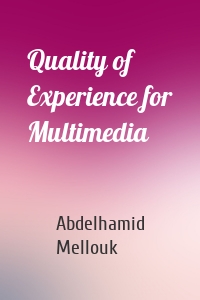Abdelhamid Mellouk
3 кн.
LTE-Advanced DRX Mechanism for Powe...
Resource allocation and power optimization is a new challenge in multimedia services in cellular communication systems. To provide a better end-user experience, the fourth generation (4G) standard Long Term Evolution/Long Term Evolution-Advanced (LTE/LTE-Advanced) has been developed for high-bandwidth mobile access to accommodate today’s data-heavy applications. LTE/LTE-Advanced has adopted discontinuous reception (DRX) to extend the user equipment’s battery lifetime, thereby further supporting...
| Автор | Abdelhamid Mellouk |
Quality of Experience for Multimedi...
Based on a convergence of network technologies, the Next Generation Network (NGN) is being deployed to carry high quality video and voice data. In fact, the convergence of network technologies has been driven by the converging needs of end-users. The perceived end-to-end quality is one of the main goals required by users that must be guaranteed by the network operators and the Internet Service Providers, through manufacturer equipment. This is referred to as the notion of Quality of Experience...
| Автор | Abdelhamid Mellouk |
Bio-inspired Routing Protocols for...
Vehicular Ad-Hoc Networks (VANETs) play a key role to develop Intelligent Transportation Systems (ITS) aiming to achieve road safety and to guaranty needs of drivers and passengers, in addition to improve the transportation productivity. One of the most important challenges of this kind of networks is the data routing between VANET nodes which should be routed with high level of Quality of Service (QoS) to ensure receiving messages in the time. Then, the driver can take the appropriate decision...
| Автор | Abdelhamid Mellouk |




